If you spent summers away from Laurier during your time at university, you might think campus life comes to a standstill between May and August.
Yes, hallways in the Fred Nichols Campus Centre on Laurier’s Waterloo campus are a little less bustling. Available study carrels in the library are more abundant. Admittedly, there is an air of enhanced serenity.
But the summertime offers students, faculty and staff unique opportunities, whether it is taking part in academic or athletic pursuits, summer camps and conferences, or making campus improvements in preparation for the upcoming academic year.
On Laurier's Brantford and Waterloo campuses, happy campers as young as five find strength and leadership in Laurier students, who have found summer employment as camp counsellors.
Through the Golden Hawk multi-sport camp – just one of many camps offered by Laurier – counsellors instruct, mentor and lead kids in exciting challenges and fun activities. For eight weeks starting in July, the camp brings the energy of 70 kids to each of the one-week sessions, which include everything from rock climbing and soccer to swimming and arts and crafts.
In Brantford, kids from the community have been participating in Laurier’s Summer Fun 101, eight weeks of camps also led by Laurier students. The camps includes fun activities that summer is known for, from athletics and movie nights to arcade adventures and barbecue Fridays.
In addition, members of Laurier’s varsity sports teams have been helping competitive young athletes find their stride through sport-specific camps. Whether it’s perfecting the one-two pass or building strength through off-field training drills, student athletes from Laurier’s hockey, soccer and basketball teams share their expertise with kids who are hungry to learn.
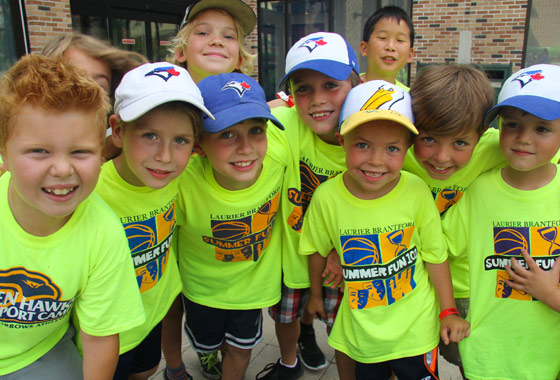
Outside of leading sport camps, summer is the perfect time for many of Laurier’s student athletes to take a well-deserved break. Not so for the Golden Hawks men’s golf team, which made history in June by winning the silver medal at the 2017 Canadian University/College Championship at Tangle Creek Golf and Country Club in Barrie. It was the team's best-ever finish.
"Our golf program here at Laurier has been improving steadily every year," said head coach Jeff Colley. "I feel that this finish is a big step into making us one of the best programs in the country."
Later this summer, Laurier’s football and soccer players will meet at training camp and the Golden Hawks men’s basketball team will try to find its groove during a sizeable pre-season challenge when it faces the top-rated NCAA Division II Regis University Rangers on Aug. 17. On the Brantford campus the varsity sports of men’s indoor soccer and co-ed cross-country continue to grow, with new recruits visiting over the summer months to meet coaches and get familiar with the community.
This summer, the newly constructed Lazaridis Hall on University Avenue in Waterloo hosted its first-ever convocation ceremonies, as well as its grand opening ceremony. While graduates bid adieu to friends and joined Laurier’s growing alumni family, there were many Laurier students who were diving into summer academics.
In July, over 500 third-year BBA co-op stream students participated in ICE Week — an integrated case competition that saw teams of five to six students present strategic recommendations to a real company related to a business issue the company was facing.
"ICE Week has been going on at Laurier for 40 years — it’s a big tradition in our business program," says Karin Schnarr, assistant professor of policy at the Lazaridis School of Business and Economics and case lead for ICE Week.
The holistic exercise is a unique 10-day experience that sees 100 teams of students prepare a comprehensive and analytical report and present their recommendations to company executives. Past case studies for ICE Week involved companies including Molson Coors Brewing Company, BlackBerry Ltd. and Unilever Canada.
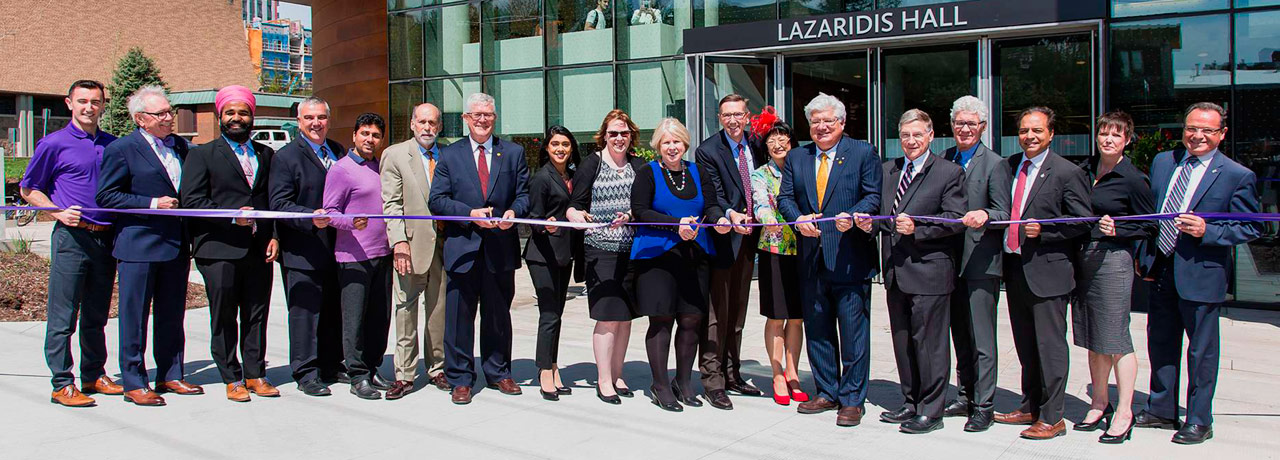
"We have alumni say 'I remember my ICE experience' and that they’d love for their companies to be involved," says Schnarr. "There’s a lot of interest and excitement. ICE Week is a give-take experience — our students’ work goes right up to the top ranks of the companies we work with. They have a real impact in a tangible way."
Lazaridis Hall also sees higher traffic every other weekend, when students arrive to finish the third and final module in the Lazaridis Executive Master’s in Technology Management (EMTM) program. The accelerated 11-month program recruits senior business leaders and immerses them in real life case studies. During the summer module, students focus on how to foster organizational renewal as they work to complete the MSc in Management.
"The EMTM degree is for decision makers — in companies that produce and use technology — who are ready to move up in their careers," says Hamid Noori, executive director of the Lazaridis EMTM program and Laurier chair in Enterprise Integration and Technology Management. "We’re training future C-level leaders who will have the skills to solve the challenges that today’s and tomorrow’s enterprises have to face."
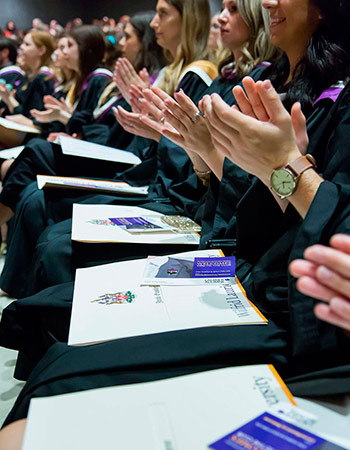
In the science building on Laurier's Waterloo campus, biology Professor Frédérique Guinel reflects on hosting the Canadian Botanical Association's 53rd annual meeting.
Themed the "Hidden World of Plants," the conference took place July 4 to July 8 with close to 100 attendees, including ecologists, taxonomists and plant biologists. Several students also participated in the conference through oral and poster presentations, as well as served as volunteers.
Highlights from the conference included two public lectures, a workshop on botanical drawing, and a roundtable titled “Expression of botanical knowledge: the interconnectedness of art, science and Indigenous wisdom,” featuring Indigenous, artist and scientist panelists. Conference attendees from across Canada also participated in field trips that explored Inglis Falls, Bruce Peninsula National Park, Backus Woods and the Grand River watershed.
The Canadian Botanical Association conference also marked the opening of an exhibit that ran from July 5 to July 26 at Laurier’s Robert Langen Art Gallery. The juried exhibit was held in honour of Canada 150 and celebrated the existence, beauty and uniqueness of Canada’s indigenous plants.
From Bricker Residence and the Frank C. Peters Building in Waterloo to the new Laurier Brantford YMCA facility, several projects designed to improve the student experience at Laurier are keeping staff and contractors busy this summer.
"From light to plumbing fixtures, there’s a lot of work happening on conservation upgrades,” says Mark Dettweiler, director: Planning and Construction at Laurier. “We have a huge list of projects made possible through the Laurier Energy Efficiency Program that will result in better living and teaching conditions and a big reduction in energy use."
In Brantford, construction of the new Laurier Brantford YMCA facility on the south side of Colborne Street continues this summer with the installation of concrete cladding, steel structures and roofing. Made possible through an innovative partnership between Laurier and the YMCA of Hamilton, Burlington and Brantford, the 118,000-square-foot building is anticipated to open in mid-2018.
Construction is underway at the Market Darling Centre building in Brantford. Joining the Community Innovation Hub and CityStudio will be spaces to support teaching, research and community engagement. The home of the new User Experience Design program includes a custom classroom, a client consultation room and a user experience lab designed to connect User Experience Design students with real-world partners for teaching and research.
In Waterloo, the Peters Building project will include a complete renovation to make room for the Faculty of Arts on the third floor and teaching and learning services on the second floor. The first floor of the building will become Laurier’s welcome centre and include a new food service outlet. The Schlegel Building, located directly adjacent to the Peters building, is also undergoing a renovation before the university registrar’s staff move into the space.
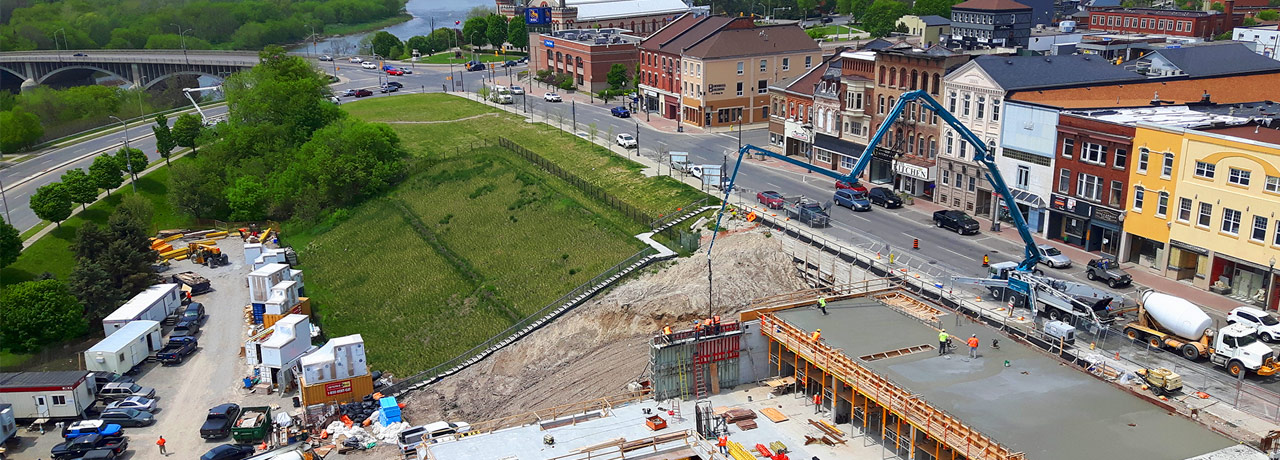
"The Peters and Schlegel buildings are going to look a lot different,” says Dettweiler. “We’re really working to open up the space and make it more intuitive. It will be an ideal first point of contact for our visitors and we’re also going to be consolidating all of our student services into one location."
On the exterior, the Peters building will be reoriented through the opening of a new entrance onto University Avenue. A similar exterior project is also underway at Waterloo Lutheran Seminary, located on the south side of Laurier’s Waterloo campus.
"There’s a blank stone wall on Bricker Street that we’re going to address," says Dettweiler. "Doing so will open up the seminary to the community through a new entrance."
While important features will stay in place — such as the seminary's chapel and elements including marble flooring — planned updates will refresh the space.
It is not just Laurier’s buildings that need maintenance throughout the summer months. The university’s grounds services team has hired several Laurier students to help with garden maintenance and landscape projects. A major project the team has worked on this summer is the planting of several mature trees on the Waterloo campus as part of Canada 150 celebrations.
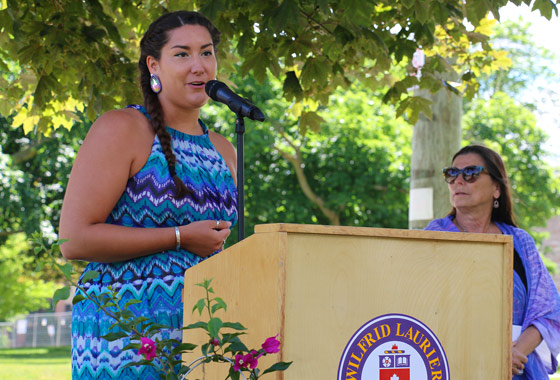
Members of the Laurier community gathered to celebrate the planting of several mature trees on Laurier's Waterloo campus.
The project, made possible through a $5,000 grant from Tree Canada, includes trees planted adjacent to Laurier’s Indigenous Student Centre on Albert Street. They include national and provincial emblem trees and trees symbolic to Canada's Indigenous peoples, including eastern white pine, sugar maple, silver maple and red maple.
Also contributing to the greening of Laurier's Waterloo and Brantford campuses are Indigenous community gardens, where university students, staff and the wider community can gain real-world experience learning about the practical uses and healing properties of native plant species.
In addition to working to create new apiaries (places where beehives are kept) on the Waterloo and Brantford campuses and undertaking an edible tree project on the Northdale campus, the grounds services team has also been busy watering, fertilizing and maintaining Laurier’s many flower beds, which serve as the perfect backdrop for idyllic convocation photos.
Laurier has played host to several community events this summer. Among them was a special Canada 150 Signature Project called The Dream Catchers, a musical performance sponsored TD and produced by Confederation Centre of the Arts. The show’s cross-Canada tour stopped at Laurier June 28, offering the audience at University Stadium an exuberant performance inspired by young Canadians from across the country.
Laurier’s Faculty of Music welcomed the National Youth Orchestra of Canada (NYO Canada) to the Waterloo campus from June 19 to July 21. The orchestra uses Laurier’s music facilities for its summer training. NYO Canada is an iconic orchestral finishing school that for more than 50 years has provided exceptional training to Canada’s best young classical musicians.
While in Waterloo, NYO Canada hosted the Good Foundation NYO Canada Chamber Music Festival, which included free faculty and student concerts in the Maureen Forrester Recital Hall. After training and performing in Waterloo, NYO Canada embarked on a cross-Canada tour.
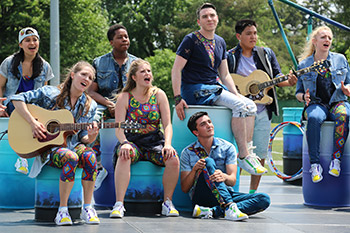
As summer inevitably winds down, Laurier staff prepare for the majority of the university’s students to return to campus and kick off a new academic year. Among the biggest initiatives is the department of residence’s preparation for first-year students.
"Professional staff have been building up their knowledge and training curriculum, while anticipating the arrival of our student staff, which will occur toward the middle of August," says David Shorey, associate director of Residence Education. "Our student staff go through robust and very thorough training that prepares them to fully support first-year students."
Laurier hires about 140 student staff members who are leaders in the residence community and help first-year students transition from high school to university.